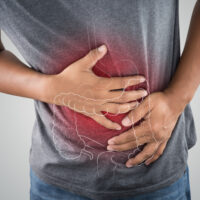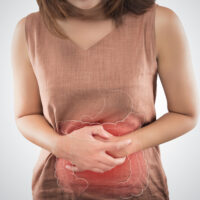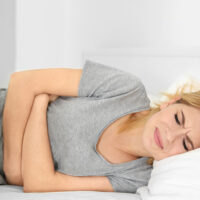Here’s all you need to know about preventing hair thinning
Thinning hair is the condition where one experiences minor or moderate hair loss. While it might not cause baldness as opposed to widespread hair loss, this is more likely to happen as you age. Due to the loss of hair, thinner spots of hair can be seen on the head.

Causes of hair thinning
There can be multiple causes for hair thinning, and the most common one is aging. Apart from this, some other factors that can add to the intensity include lifestyle habits and genetics. It’s normal to lose up to 100 hair strands a day. If the number increases, it could be a sign of hair thinning.
Some of the lifestyle habits that can add to hair thinning worries include:
- Over use of styling tools and treatments
Coloring, perming, ironing, curling and other treatments could damage the health of the hair. - Using harsh hair products
Temporary hair color, extreme-hold sprays, and gels can also lead to hair thinning. - Tying hair too tightly
Tight ponytails can cause the hair to loosen from the follicles, thus resulting in thinning of hair. - Insufficient dietary supply
It’s possible that the dietary requirements of iron, folic acid, and various other minerals are not being met, which also results in thinning of hair. - Stress
Stress might prevent new hair from growing out of the hair follicles due to the hormonal change in the body. This could lead to hair thinning.
Apart from the above causes, there are some other reasons like having a baby, stopping the use of birth control pills, going through certain hormonal changes, excessive loss of weight, treatment of an autoimmune disease, having immune system deficiency, and having a skin infection. Some of the less common reasons for hair thinning are eating disorders, high fever, and pulling one’s hair.
Symptoms of hair thinning
There are several symptoms of hair thinning. While the symptoms are commonly seen on the head, hair thinning might spread to the entire body soon. Some of the common symptoms include:
- Bald patches
Concentrated bald patches on the head could be signs of hair thinning. Due to severe hair loss over time, the formation of concentrated patches could be a reason for worry. - Hair clumps
If you get clumps of hair on the hands when you rake your fingers through the hair, this might be a sign of severe hair thinning. - Thinner ponytail
A thinner ponytail on women is also a common symptom of thinning hair. - Visible scalp
More patches of scalps being visible over a short period is also a symptom of hair thinning.
Tips to combat hair thinning
Some of the thinning hair products are very effective as a remedy for hair thinning. However, there are different other ways in which the phenomenon can be avoided. Let us understand some tricks and tips to avoid hair thinning.
- Follow protein-rich diet
Try to follow a high protein diet. Fish, chicken, cottage cheese, etc., should be a part of your daily diet. These will enhance hair growth. You can also use supplements. - Loosen up the hair
If you constantly pull your hair or tie your hair into a tight ponytail, you can start losing hair. Apart from this, even products like hair extensions can damage the hair follicles. Make sure you let your hair lose one in a while. - Understand symptoms
Thinning hair is commonly noticed in thyroid conditions. It is especially seen in hypothyroidism, which is common in post-menopausal women. Some of the other symptoms of thyroid conditions are tiredness, dry skin, and weight gain. If any of these symptoms are noticed, there are also chances that your hair is thinning as well. - Keep a check on vitamin levels
Vitamin D and vitamin B12 are extremely essential for hair health. If there’s a deficiency of any of these vitamins, it can lead to slower hair growth or hair thinning. Consult a doctor and upon the doctor’s recommendation, take a supplement if you’re worried about dropping vitamin levels. - Use hair conditioner regularly
Conditioning of hair is very important, as dehydrated hair can often lead to thinning. Using a conditioner regularly is important. - Maintain a healthy lifestyle
Lifestyle impacts the health of the hair in a big way. Don’t skip exercise, have food rich in nutrients, avoid the junk, give up smoking. All of this will ensure that the hair remains healthy and thus chances of hair thinning are reduced.
Best hair thinning products in 2020
Seeing a doctor should be the first step towards the process of dealing with thinning hair. There might be some medications or treatments needed if the condition is severe. However, since hair thinning is common, you might feel the need to use some popular thinning hair products that are available over the counter. These may include supplements, shampoos, and hair oils that are very effective in reducing hair thinning and are also recommended by dermatologists.
Let us have a look at people’s favorite thinning hair products available currently in the markets.
- Women’s 5% Minoxidil Foam for Hair Thinning and Loss
This is one of the best products for women. The hair supplement has botanical extracts in addition to minoxidil. The botanical extracts allow the scalp to remain healthy and conditioned, thereby providing a good environment for hair growth. Another component is alpha hydroxy acid (AHA), which keeps the hair follicles open and promotes skin exfoliation naturally. This is easily available online and can also be purchased at chemist stores across the country. A clinical study conducted by the brand suggested that it has helped more than 80% of women using the product.
- Men’s Extra Strength 5% Minoxidil Topical Solution for Hair Loss and Hair Regrowth by Rogaine
This was the first product that was approved by the FDA for the treatment of hair loss. It stimulates the hair follicles, allowing them to grow thicker locks. The minoxidil element in the serums addresses the problems of both- males in the form of hair thinning and females in the form of thinning in the areas around the crown. It also helps against receding hairline. Minoxidil acts due to the effect it has on the calcium channels on the hair cells. The capillary flow of blood to the dermis of the skin is increased, making the follicles grow stronger and thus allowing them to regrow the hair.
- Dove Dermacare Scalp Dryness & Itch Relief Anti-Dandruff Shampoo
One of the biggest USPs of this product by Dove is its affordability. The shampoo has also received overall 4-star reviews on Amazon, making it a reliable one for people who are ordering without a doctor’s prescription. Although the dermatologists have recommended the shampoo, people do end up saving a lot of money by buying this online. The main ingredient in the shampoo is zinc pyrithione that does not allow dead cells around the scalp to build up. These dead cells prevent the growth of hair in particular areas, and thus hair growth is facilitated to a great extent with the shampoo. It also has some added advantages as it stops itching and flaking, which eventually results in hair thinning. - Head & Shoulders Classic Clean 2-in-1 Shampoo
This shampoo, which is available over the counter, is also rich in zinc pyrithione. The microbe Malassezia that lives on our scalp gives rise to dandruff, and zinc pyrithione can fight the microbe successfully. Selenium sulfide is also part of the 2-in-1 formula, and it is helpful in the treatment of conditions that are more serious like fungal infections. Zinc carbonate helps in moisturization of the scalp and also creates a healthy environment in the head, which are favorable conditions for the growth of hair.
- Nutrafol Hair Loss Thinning Supplement
This supplement is formulated by physicians and has botanicals that provide a solution for every stage of hair thinning. There are DHT inhibitors as well as anti-stress adaptogens that establish a balance in the hormonal levels. Thereby, follicle damage is reduced, and at the same time, anti-inflammatories reduce the damage too. With the help of vitamins, minerals, and amino acids, the growth of hair is supplemented. If one is looking for more natural treatments, then this is one of the best thinning hair products. One must be patient as the results only show up after using the products for at least a few months.
- Viviscal Extra Strength Hair Nutrient Tablets
The tablets, which are great supplements for decreasing hair thinning, are rich in ingredients like biotin, apple extract, and vitamin C. Apart from these; a marine complex called AminoMar promotes healthy growth from within and nourishes the hair as well. Viviscal supplements result in the extension of the anagen phase of the cycle of hair growth. The company also offers other hair care products, including shampoo and conditioner.
- Alterna Caviar Anti-Aging Clinical Densifying Shampoo
This shampoo is recommended for anyone with thinning hair by celebrity hairstylist Andrew Fitzsimons whose elaborate list of clients includes the Kardashians. DHT is one of the main contributors to hair loss, and this shampoo reduces the growth of DHT. Thus, it also helps in reducing dirt clogging on the follicles and reducing environmental residues and excess sebum. Thus, the hair is stronger and looks healthier on the outside. Red Clover Densifying Complex is a proprietary part of the formula that gives rise to naturally thick and stronger hair, making it one of the most effective thinning hair products currently.
- Paul Mitchell Tea Tree Scalp Care Anti-Thinning Shampoo
Scalp care is very important to prevent hair thinning and that is where the efficiency of this product lies. Doctors suggest that the scalp contains sebaceous glands that produce oil or sebum, which are responsible for producing hair. Sebaceous glands are present in abundance, and thus, the scalp needs regular maintenance. In case there is a build-up of oil, the hair follicles could end up being clogged, or there might be dandruff. This particular blend has turmeric, clover flower extract, pep peptides, Kakadu plum, and ginseng to stimulate the scalp and avoid breakage of hair. Tea tree oil is one of the natural ways of scalp build-up.
- Kiehl’s Magic Elixir Hair Restructuring Concentrate
Rosemary oil has been recently established as an effective component for the treatment of hair loss and hair thinning. Just a few drops of rosemary oil in the shampoo can provide nourishment to the scalp. This pre-shampoo treatment has a good mix of rosemary leaf, and various other natural ingredients. One can apply directly on the hair 10 minutes before washing their hair and then gently massage the hair to stimulate the flow of blood.
- Bumble and Bumble Full Potential Shampoo
Long-term results can be expected by using this shampoo that strengthens the three main parts of your hair structure – scalp, roots, and mid-shaft to ends. When the hair seems limp, just spray it with a bit of water and then apply the product. Lightly dry the hair with a towel and then blow dry by bringing the hair forward around the face to smooth out the pieces.
- Ouai Treatment Masque
While it might not be so effective for thinning hair directly, this masque works wonders for split ends. The hair strands are made stronger by conditioning the hair deeply, thereby protecting the hair cuticle, the outermost layer of the hair. There’s a protein called Keratin on the cuticle and this provides nourishment to the hair. The cuticle should remain strong to ensure that the strands do not break.





